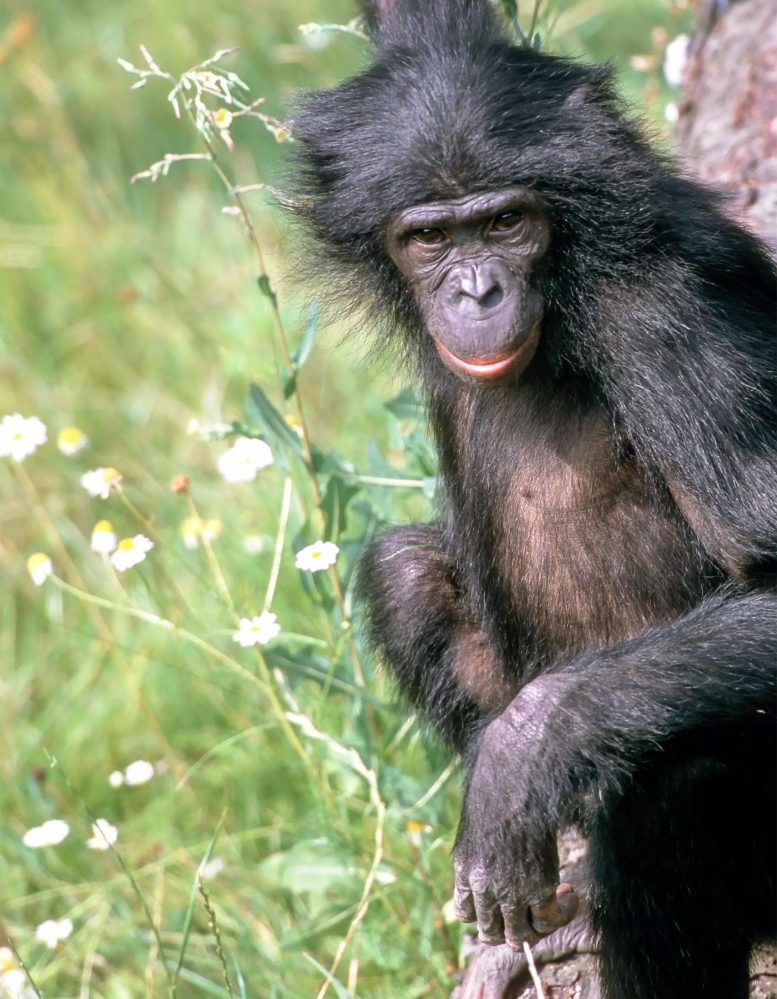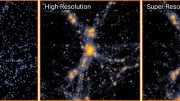Biologists at the Max Planck Institute for Evolutionary Anthropology have completed the sequencing and analysis of the genome of the bonobo, finding that the bonobo differs by approximately 1.3% from humans.
In a project led by the Max Planck Institute for Evolutionary Anthropology in Leipzig, an international team of scientists has completed the sequencing and analysis of the genome of the last great ape, the bonobo. Bonobos, which together with chimpanzees are the closest living relatives of humans, are known for their peaceful, playful and sexual behavior that contrasts with the more aggressive behavior of chimpanzees. The genome sequence provides insights into the evolutionary relationships between the great apes and may help us to understand the genetic basis of these traits.
The genome was sequenced from Ulindi, a female bonobo who lives in the Zoo Leipzig. Genome sequences have also been generated from all other great apes – chimpanzee, orang-utan and gorilla – making this the final genome of a great ape to be sequenced and providing insights into their relationships with one another and with humans.
The comparison of the genome sequences of bonobo, chimpanzee, and human shows that humans differ by approximately 1.3% from both bonobo and chimpanzee. Chimpanzees and bonobos are more closely related, differing by only 0.4%.
Bonobo and chimpanzee territories in central Africa are close to one another and separated only by the Congo River. It has been hypothesized that the formation of the Congo River separated the ancestors of chimpanzees and bonobos, leading to these distinct apes. Examination of the relationship between bonobos and chimpanzees showed that there appears to have been a clean split and no subsequent interbreeding, which supports this hypothesis.
Despite the fact that on average the genomes of bonobos and chimpanzees are equally distant from human, analysis of the genome sequence of the bonobo revealed that for some particular parts of the genome, humans are closer to bonobos than to chimpanzees, while in other regions the human genome is closer to chimpanzees. Further research will determine whether these regions contribute in any way to the behavioral differences and similarities between humans, chimpanzees, and bonobos.
Reference: “The bonobo genome compared with the chimpanzee and human genomes” by Kay Prüfer, Kasper Munch, Ines Hellmann, Keiko Akagi, Jason R. Miller, Brian Walenz, Sergey Koren, Granger Sutton, Chinnappa Kodira, Roger Winer, James R. Knight, James C. Mullikin, Stephen J. Meader, Chris P. Ponting, Gerton Lunter, Saneyuki Higashino, Asger Hobolth, Julien Dutheil, Emre Karakoç, Can Alkan, Saba Sajjadian, Claudia Rita Catacchio, Mario Ventura, Tomas Marques-Bonet, Evan E. Eichler, Claudine André, Rebeca Atencia, Lawrence Mugisha, Jörg Junhold, Nick Patterson, Michael Siebauer, Jeffrey M. Good, Anne Fischer, Susan E. Ptak, Michael Lachmann, David E. Symer, Thomas Mailund, Mikkel H. Schierup, Aida M. Andrés, Janet Kelso and Svante Pääbo, 13 June 2012, Nature.
DOI: 10.1038/nature11128










Be the first to comment on "Bonobo Genome Completed, Differs from Humans by 1.3 Percent"